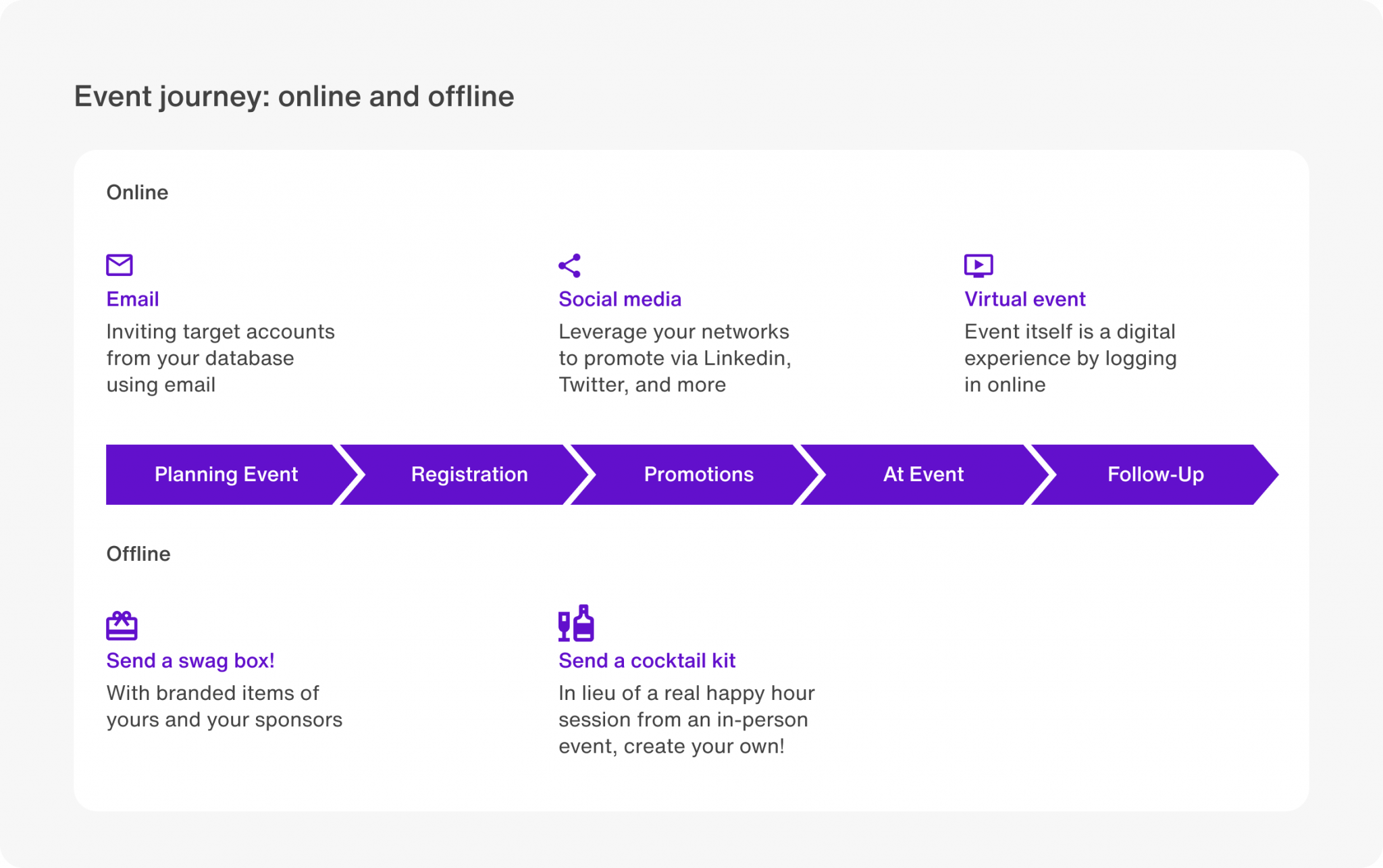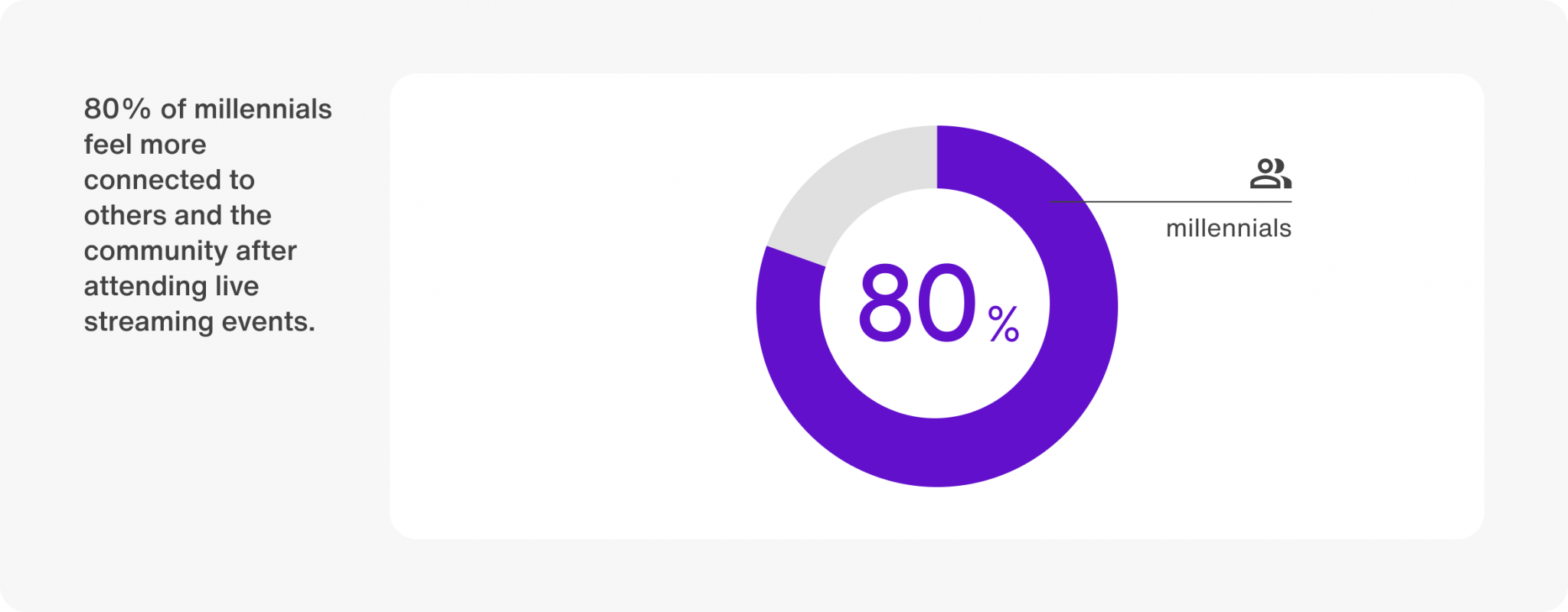Capture the magic of live events in the mobile streaming era

Gaming and eSports might be the industries dominating live streaming today, but the live streaming market is projected to grow to $25 billion by 2023. Live stream will encompass industries like eCommerce, marketing, and on-demand services.
According to Statista, 482.5 billion hours were spent on mobile live-streaming apps worldwide in 2020. Meanwhile, Conviva found that live content accounts for 23% of global viewing time.
And brands are taking note.
New opportunities have emerged for brands to deliver digital content creatively. Salesforce took its Dreamforce event virtual and reached 75 times more people than its in-person event. Ford Motor Company revealed its new F-150 in an interactive virtual event that attracted over 690,000 viewers. Consensus’ 5-day online conference drew 22,000 attendees.
Live streaming events have experienced a giant leap forward. They’re no longer lesser renditions of their IRL counterparts. New technologies have made it possible to deliver immersive experiences that rival in-person ones, introducing multi-dimensional interactivities that engage participants before, during, and after the event.
Virtual events aren’t a temporary replacement for in-person gatherings, and they should be a part of your event strategy. Here’s how to take your live streaming event from just a video broadcast to an immersive, engaging experience.
Virtual events are here to stay
Live event streaming now accounts for 17% of all internet traffic. And there are many reasons why customers and brands gravitate toward events with a live stream element.
Content delivery and consumption is extremely convenient online or on a mobile device. When events go virtual, brands can reach a global audience without organizing numerous in-person events, and save costs doing so. This often makes virtual events a exceptional lead-generation opportunity. And at the very least, you’re beginning to build an authentic relationship with your audience.
Consumers enjoy live streaming events because they can join them from the comfort of their own homes or listen in while they’re on the go. A viewer doesn’t have to spend anything to travel to your event, and could conceivably attend an event in New York and then one in London a few hours later.
Virtual events also make it easy to focus on content and conversations, but you’ll have to ensure audience members have the ability to actively engage with the event, otherwise you’ll lose them along the way.

Bring the best parts of live events into your app
Encouraging live chat and tag-based communications helps everyone feel connected to the event. With engaging messaging technology, you can captivate an audience and bring them into the virtual experience.
Polling is also a great way to interact with an audience and gamify a live stream.
With Sendbird, attendees can use live chat to connect with other participants without missing out on anything—building more meaningful relationships in less time.

Elevate in-app engagement eBook
What do immersive virtual experiences look like?
A virtual event shouldn’t just consist of a talking head.
An immersive virtual event shapes the participant’s experience, and doesn’t leave them watching from the sideline. Here are some common characteristics of immersive streaming events:
- They deliver a rich and multi-sensory experience. For example, a wine-tasting event where the host sends participants bottles of wine ahead of time or a yoga retreat where students engage physically.
- They combine different mediums, such as graphics, art, film, music, dance, and traditional storytelling, to lead the audience through a narrative to keep them engaged while catering to different learning styles.
- They transform a traditional venue to deliver innovative experiences. For example, you can use projection technology inside a museum to bring history to life or augmented reality (AR) technology to place objects in space with which the audience can interact.
- They include activities to elicit emotional responses from the audience and make them feel like they’re part of the narrative through art installations, musical performances, and various storytelling techniques.
- They feature great hosts or speakers who know how to drive engagement.
Use all of these things to create your “must-attend” moment. Here are some examples of how to make live streaming events more immersive and interactive:
- A virtual happy hour lets participants network in a relaxed atmosphere. You can send everyone ingredients and recipes ahead of time to craft a cocktail together.
- A giveaway marketing campaign with an influencer that involves live streamed shopping and interactive choices.
- If your live stream is scheduled, include an option to have popcorn or other snacks delivered during the stream.
- Virtual emcees can lead polls or provide a stretch break in between sessions.
Keep your audience engaged during your live event
Delivering engaging live streaming events in the mobile era isn’t just about having the best technologies. We must go back to the basics: what makes people attend live events, and how can we bring the magic into the mobile streaming era?
Emotional needs
Nobody is attending your event to experience a live stream. They are coming to your event for your brand, or the content, or the community.
Eventbrite survey found that 48% of millennials attend events so they can share their experiences.

New features are great and all, but an audience member seeks more than that.
Your audience is looking for:
- A sense of belonging through building connections with other attendees and being part of a community.
- A reinforced sense of identity through experiences and interactions shared with like-minded individuals.
- Meaningful experiences they can share with friends and family on social media. An
Mobile user experience
A successful event must deliver a seamless user experience. You can’t ask participants to jump through hoops to access your content. You must enable them to participate in your event from anywhere.
Therefore, you must offer the most convenient way to access the best experience via mobile devices. From the viewing experience, to the ability to interact with others through features such as live chat, Q&A, poll, and breakout rooms, everything must work seamlessly to make participation as frictionless as possible.
Audience expectations
The top reason people join virtual events is learning, followed by networking. They want more from a virtual event than just watching people talk on a video conference call.
And since virtual events are getting better and better, your audience expects more and more. Attending these free, virtual events as research can help your strategy as you grow your event programming.
Provide value at every stage of your event
The best events aren’t solely virtual or in person. You need channels like social media and email to drum up excitement and get people signed up to your event. There’s also the follow-up to consider.
The best thing you can do to guide a sign-up to an active participant is make your event an experience. Get your attendees connected as soon as possible. Develop your own event community, in-app, and provide extra content that only adds to your experience day of.
Create and distribute multimedia content that engages all the senses by combining images, videos, presentations, performances, and more to deliver a rich, engaging, entertaining streaming experience.
Using the right virtual event tools, you can add calls to action directly to the streaming experience to drive conversion when the audience is most engaged.
Last but not least, round out the experience with personalized event follow-ups. Using data captured during the event, you can identify each participant’s interest and analyze their behaviors to send the most appropriate content and offers to continue the conversation, build relationships, and drive conversions.
Two-way communication: The foundation of engaging streaming events
From watch parties to B2B conferences, audience engagement and two-way conversations are essential for creating an immersive and engaging experience.
Live chat allows you to communicate with your audience throughout an event to answer questions, gather real-time feedback, and share relevant links and content to deliver a dynamic, multi-dimensional experience.
Any streaming event can benefit from a chat feature—but not all solutions are created equal.
Besides the ease of implementation and a user-friendly interface, you must consider privacy and content moderation to ensure a secure and on-brand event experience. Sendbird Live turns your mobile app into a streaming platform, supported by our trusted chat API to turn viewers into active participants. You can also consider integrating membership pricing tools that price your memberships fairly, offer access to exclusive chat features or VIP communities to enhance engagement and build a sense of community among your audience members.
How will you increase customer engagement and build excitement around your brand through mobile streaming and live chat?
Check out Sendbird’s chat solution for live streaming and see what’s possible.










